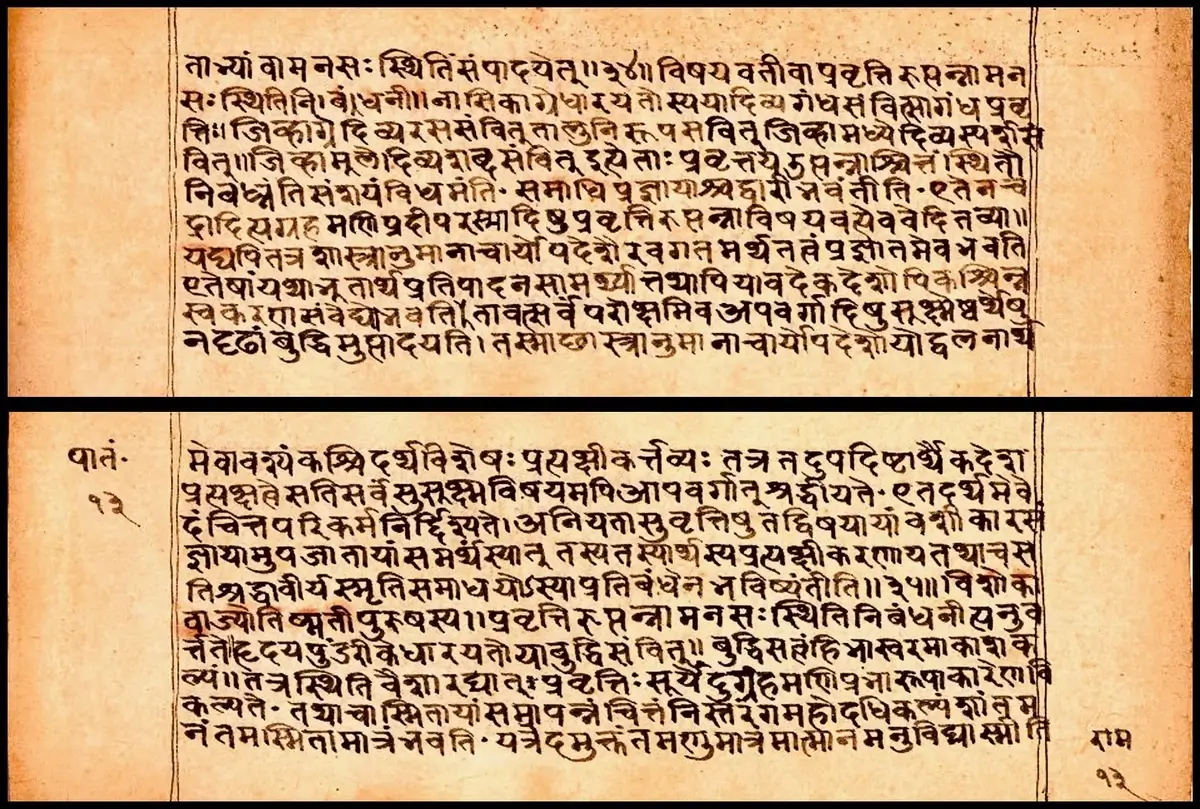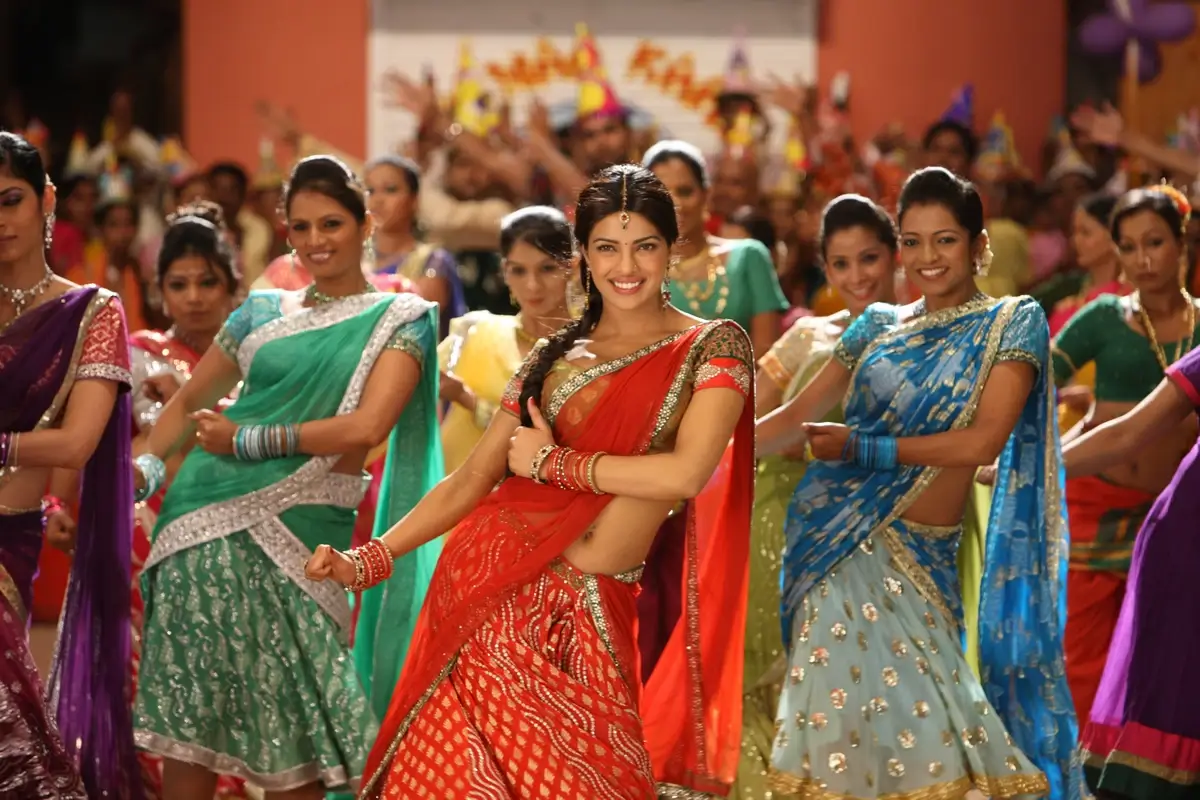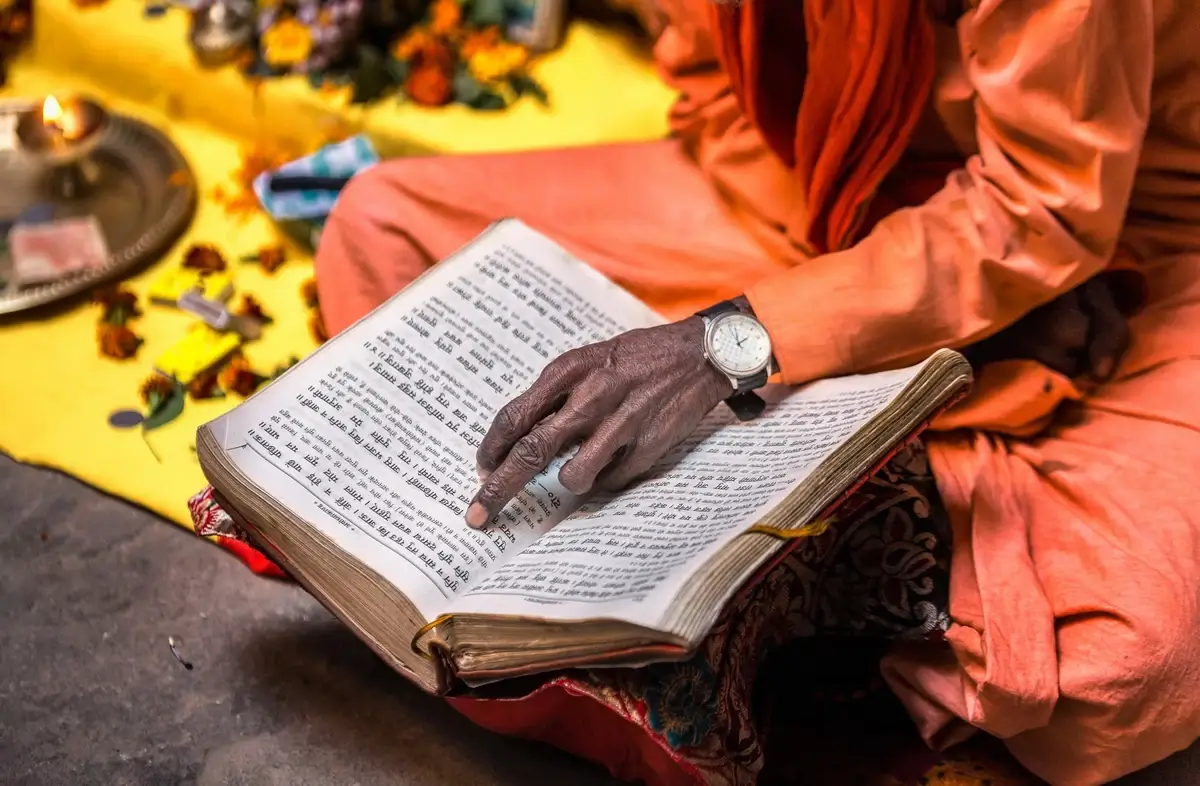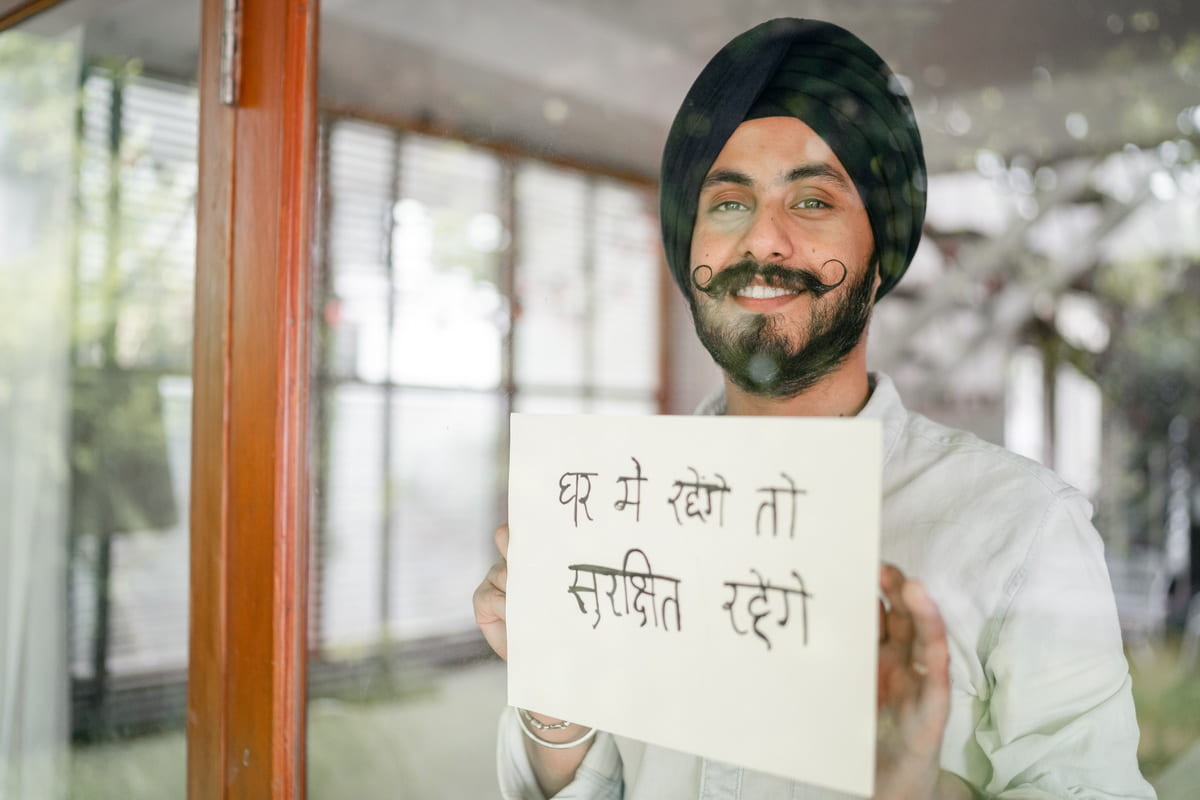Hey there, language lovers! Ever been intrigued by the swirling script and mellifluous tones of Hindi? Oh, you haven’t? Well, fasten your seatbelts because you’re in for a linguistic rollercoaster! By the end of this joyride, you’ll be dishing out fun facts about Hindi like a pro at dinner parties or, you know, awkward Zoom meetings.
Hindi isn’t just another entry in the spoken language world; it’s the heartbeat of a culture, a bridge between ages, and the ink of an ongoing story. Spoken by hundreds of million people, mostly in India, Hindi is a firework of history, tradition, and modernity. So, what makes this ancient tongue so darn cool? Let’s unwrap these amazing facts about Hindi, one layer at a time!
1. Hindi’s Birthday Party: What is Hindi Diwas?
Did you know Hindi has its own birthday party called Hindi Diwas? Celebrated every year on September 14th, Hindi Diwas marks the day in 1949 when Hindi was adopted as the official language of the Indian constituent assembly. So, it’s basically a national shindig!
Now, Hindi Diwas isn’t just a government affair. Schools, colleges, and communities bustle with poetry readings, debates, and awards to honor Hindi. It’s like the Oscars, but for a language!
2. Young or Old: How Old is Hindi Really?
You might be wondering, how old is Hindi? Is it going through a mid-life crisis or is it still in its infant years? The roots of Hindi trace back to the Indo-Aryan branch of languages. The modern form? A sprightly 400-500 years old!
In comparison, English is like the annoying older sibling who never lets you forget they were born first. The English language dates back to around 1,500 years, making Hindi relatively young. But hey, age is just a number!
3. The Family Tree: Hindi’s Indo-Aryan Roots
Hindi isn’t some lone wolf; it’s part of the big, fat Indo-Aryan family. The Indo-Aryan languages are a branch of the larger Indo-European family, which—get this—includes English too. Talk about a family reunion!
The language primarily evolved from Sanskrit, through Prakrit and Apabhramsha stages of evolution. What’s fascinating is that despite its family ties, Hindi has its unique personality traits—like its script and its insane vocabulary.
4. Global Footprint: Hindi in the Spoken Language World
Did you know that Hindi is one of the most spoken languages in the world? Yup, it’s right up there with Mandarin, Spanish, and English. With a staggering 310 million native speakers and around 120 million more using it as a second language, Hindi isn’t just confined to the Indian subcontinent; it’s globetrotting baby!
From the United States to South Africa to even Fiji, you’ll find pockets of Hindi speakers adding a dash of spice to the local culture. These figures make Hindi a bona fide member of the spoken language world. This means you’re more likely to bump into a Hindi speaker than an alien, statistically speaking.
5. Say My Name, Say My Name: Hindi Naming Conventions
Names in Hindi aren’t just labels; they’re stories waiting to be told. Unlike the ‘John Doe’ simplicity you might find in English, Hindi names often have poetic, philosophical, or even astronomical meanings. The language goes all out!
The first names are usually derived from Sanskrit and may represent virtues, celestial objects, or gods. And don’t even get me started on surnames! Many mirror professions, places of origin, or even the qualities of an ancestor. So next time you meet a ‘Sharma’ or ‘Verma,’ you’re getting more than a name—you’re getting a history lesson!
6. Hey, You Sound Familiar: Hindi’s Phonetic Alphabet
Did you know that Hindi is super honest? When it comes to its script, what you see is what you get. Unlike English, where ‘cough,’ ‘though,’ and ‘through’ look like siblings but sound like strangers, Hindi is phonetically consistent. And that’s one of the most fun facts about Hindi.
The Devanagari script, used for writing Hindi, is phonetic. This means each letter corresponds to a specific sound, making it remarkably easy to read once you know the basics. So, less time learning exceptions, more time mastering the accent!

Image source: storytrails.in
7. Bollywood: The Hollywood of Hindi
If Hollywood is the dream factory, then Bollywood is the dream bazaar! Churning out more films than any other film industry in the world, Bollywood is the crown jewel of Hindi culture. The term ‘Bollywood’ combines Bombay (Mumbai’s old name) and Hollywood, giving us this glittering portmanteau.
These movies are not just about drama and dance; they’re a cultural smorgasbord. Love, hate, comedy, tragedy—you name it, Bollywood has it! Now, if you’re a movie buff, here’s your chance to add a splash of Hindi to your movie nights. Who said Hindi fun facts can’t be entertaining?

Image source: ignitebollywood.com
8. Fusion Cuisine: Hindi’s Mix of Persian, Arabic, and Sanskrit Words
If Hindi were a dish, it’d be a delicious fusion platter. You’ve got your staple Sanskrit, a pinch of Persian, and a sprinkle of Arabic. Oh, it’s a tasty blend!
Hindi is an Indo-Aryan language but has borrowed a healthy serving of words from Persian and Arabic due to historical trade and invasions. Words like “duniya” (world) are of Persian origin, while “kitaab” (book) is borrowed from Arabic. Makes you wonder, doesn’t it? A language can be a lot like a well-stocked spice rack—variety is the essence.
9. English Loves Hindi: Common English Words Borrowed from Hindi
If Hindi were a person, English would be its biggest fan! You’d be surprised at how many everyday English words have Hindi origins. Ever heard of “shampoo”? Yup, it comes from the Hindi word “chāmpo,” which means to press or knead.
Words like “jungle,” “bungalow,” and “pundit” also made their way from Hindi to English. So next time you go for a jungle safari or stay in a bungalow, remember you’re using a piece of Hindi vocabulary! Talk about fun facts about Hindi merging into your daily life!
10. The Mother Script: Devanagari
Get your pencils ready, folks; we’re about to do some sketching! Just kidding, but you might want to learn how to sketch the Hindi alphabet. The script used for writing Hindi is called Devanagari, and it’s not just confined to Hindi; it’s also used for Sanskrit, Marathi, and even Nepali.
Devanagari is a syllabic alphabet, meaning each symbol corresponds to a syllable rather than a single sound. It’s not just writing; it’s art. So if you’re into aesthetics and symmetry, Devanagari will tickle your artistic bones.
11. Polyglot Nation: Hindi Among Multiple Languages in India
Let’s talk about the diversity jackpot! India is a land of languages—more than 1,600 to be precise. Yet, Hindi has carved out its space as one of the two official languages of India, alongside English.
Don’t be fooled, though. While Hindi is the mother tongue for about 41% of the Indian population, each state in India can have its own official language too. From Bengali to Telugu, the linguistic landscape is as diverse as a buffet spread. Now, that’s a polyglot nation for you!
12. Can You Read This? Regional Variants of Hindi
Hindi boasts a variety of dialects and regional variants that would make any linguist drool. From Braj to Awadhi to Bhojpuri, each region in Northern India has its own flavor of Hindi. And guess what? They can differ so much, they might as well be different languages!
Each variant has its own phonetic peculiarities, vocabulary, and even writing styles. It’s like meeting Hindi’s extended family—each member has their own quirks but they all share the same DNA.
13. No Kidding: Children’s Rhymes in Hindi
“Jack and Jill” may have tumbled down a hill, but in the Hindi world, it’s all about “Machhli Jal Ki Rani Hai” (Fish is the Queen of Water). Children’s rhymes in Hindi aren’t just catchy tunes; they’re mini cultural encyclopedias teaching kids about animals, family values, and even mathematics.
What’s more fascinating? These rhymes often come with hand motions and dances. So while English-speaking kids are patting their heads and rubbing their tummies, Hindi-speaking youngsters are mastering the art of synchronization.
14. Double Dose: Hindi’s Twin—Urdu
If Hindi had a twin separated at birth, it would be Urdu. Born from the same linguistic womb, these two languages are so similar in spoken form that they often fool people into thinking they’re the same. But hold your horses! When written, they use entirely different scripts—Devanagari for Hindi and Nastaliq for Urdu.
This is one of the most surprising facts about Hindi; you might be understanding Urdu and not even know it! Think of them as fraternal twins—one got the family nose, the other got the family eyes.
15. Talk the Tech: Hindi in the Digital Age
Guess what? Hindi is not just the language of poetic verses and emotional Bollywood dialogues. It’s rocking the digital world too! Yep, it’s making waves in the world of tech. Websites, mobile apps, and even programming languages are increasingly becoming Hindi-friendly.
In India, there’s a significant push to make digital content available in Hindi and other regional languages. So, the next time you ask your voice assistant to play your favorite Hindi song, remember that you’re part of a tech-savvy crowd who prefers their gadgets to speak their language. How’s that for amazing facts about Hindi?
16. Vocal Range: Hindi Dialects That’ll Surprise You
Okay, you might think you know Hindi dialects, but prepare to be amazed. It’s not just about Awadhi and Braj; you’ve got dozens of other dialects like Bundeli, Bagheli, and Kannauji. It’s like a linguistic smorgasbord!
Each of these dialects offers a unique twist to the core language, changing the flavors just enough to keep your ears tingling. Some dialects may even mix with local languages, creating hybrids that can leave even linguists scratching their heads!
17. Turn the Radio On: Hindi’s Influence in Music
Pop quiz: What do Bollywood soundtracks, classical ragas, and hip-hop remixes have in common? Answer: They’re all singing in Hindi! The language has a musical influence that spans genres and even crosses borders.
Whether it’s a soulful ghazal or a foot-tapping Bollywood number, the rhythms and words of Hindi are as versatile as a Swiss Army knife. Not just in India, but its influence can be heard on radio channels globally. So, turn that radio on and groove to the Hindi beats!
18. Written in the Stars: Astrology and Hindi
You’ve heard of zodiac signs, but have you ever had your Kundali read? Hindi and astrology go together like bread and butter. Or, considering we’re talking about Hindi, like ‘roti’ and ‘sabzi’! In India, astrological concepts are often written and interpreted in Hindi.
Whether you’re getting married or launching a new business, chances are an astrologer is consulted. The terms used, like ‘Graha’ (planet) or ‘Rashi’ (sign), are part of the standard Hindi lexicon. This astral connection adds a layer of mysticism to the already intricate tapestry of Hindi.

Image source: oum.ru
19. Got the Time? The Hindi Concept of Time
Hold on to your hats, time travelers, because in Hindi, time isn’t just hours and minutes—it’s a cultural concept! Hindi has unique terms for various moments in the day, like ‘Prahara,’ which divides the day into eight parts. Your grandma might talk about doing something “doosre prahar,” and she’s not summoning the gods; she’s talking about the second quarter of the day!
There’s even a sophisticated vocabulary for expressing a range of past and future tenses that can make your head spin. Ever heard of the “Bhavishya Kaal” or the “Bhoot Kaal”? Yep, we’re talking future and past tenses, but with a flair only Hindi can offer.
20. Scripted Elegance: The Beauty of Hindi Poetry and Literature
Bored of Netflix and chill? How about some Hindi poetry to stir the soul? Hindi literature is a cosmos of its own, filled with planets of poetry, stars of stories, and galaxies of genres. From the rebellious words of Dushyant Kumar to the soul-stirring verses of Harivansh Rai Bachchan, Hindi literature is a true testament to the language’s expressive prowess.
Whether it’s the patriotic “Sarfaroshi ki Tamanna” or the heart-wrenching “Madhushala,” Hindi poetry can evoke emotions you didn’t even know you had. And if you’re not into poetry, there are epics, novels, and essays that will still keep your eyes glued to the page.
FAQ
What is Hindi Known For?
Hindi is known for a variety of things, darling! It’s the official language of India, the melodious tongue of Bollywood, and the lyrical medium of some of the most beautiful poetry you’ll ever hear. It’s the language of business in one of the world’s most populous nations, and the heartbeat of a culture rich in history, religion, and arts.
How did Hindi Get Its Name?
The term ‘Hindi’ comes from the Persian word ‘Hind,’ which refers to the land of the Indus River. The Persians were basically like, “Hey, you guys near the Indus, you’re all Hind!” And thus, Hindi got its name. It’s basically geographical tagging, ancient-style.
How Old is Hindi Spoken?
In the world of languages, Hindi is kinda like a millennial. Its earliest forms date back to the 7th century, but the modern version we know and love? That one’s only been around for a few centuries. So, while it’s not new, it’s not exactly ancient either. It’s, you know, comfortably middle-aged.
Why is Hindi Popular in India?
Well, duh, because it’s awesome! But for real, it’s the first language of more than 40% of the Indian population. Plus, it’s the medium of some of India’s most beloved cultural exports—think Bollywood, music, and literature. It’s also versatile, easy to learn, and connects a linguistically diverse country.
What is the Oldest Hindi Text?
The oldest text considered to be in Old Hindi is ‘Prithviraj Raso,’ an epic poem attributed to Chand Bardai. It dates back to around the 12th century and tells the story of Prithviraj Chauhan, a legendary king. It’s a real page-turner, folks!
Where did Hindi Begin?
Hindi began in the Northern regions of India, specifically around the Delhi area. It was influenced by other languages like Sanskrit, Persian, and Arabic before evolving into the Hindi we know today. It’s like the love child of several rich linguistic traditions.
How Much of the World Speaks Hindi?
Brace yourselves; the numbers are staggering. Hindi is spoken by over 310 million people as a first language and an additional 120 million as a second language. That’s a whole lotta people chatting, arguing, and singing in Hindi!
Why is Hindi Unique?
Apart from its delish array of dialects, what makes Hindi unique is its incredible flexibility and expressiveness. It borrows freely from other languages but retains a core structure that’s uniquely its own. Plus, its script, Devanagari, is phonetic—what you see is what you get!
What is the Rank of Hindi in the World?
No slouch in the popularity contest, Hindi ranks as the third most-spoken language in the world after English and Mandarin Chinese. If Hindi was a high school student, it would totally be sitting at the cool kids’ table.
Where is Hindi Most Popular?
Obviously, Hindi is the superstar in India, but its fan club is global, baby! Countries like Nepal, Fiji, Trinidad and Tobago, and Mauritius also have significant Hindi-speaking populations. And let’s not forget the Indian diaspora spreading the Hindi love worldwide.





